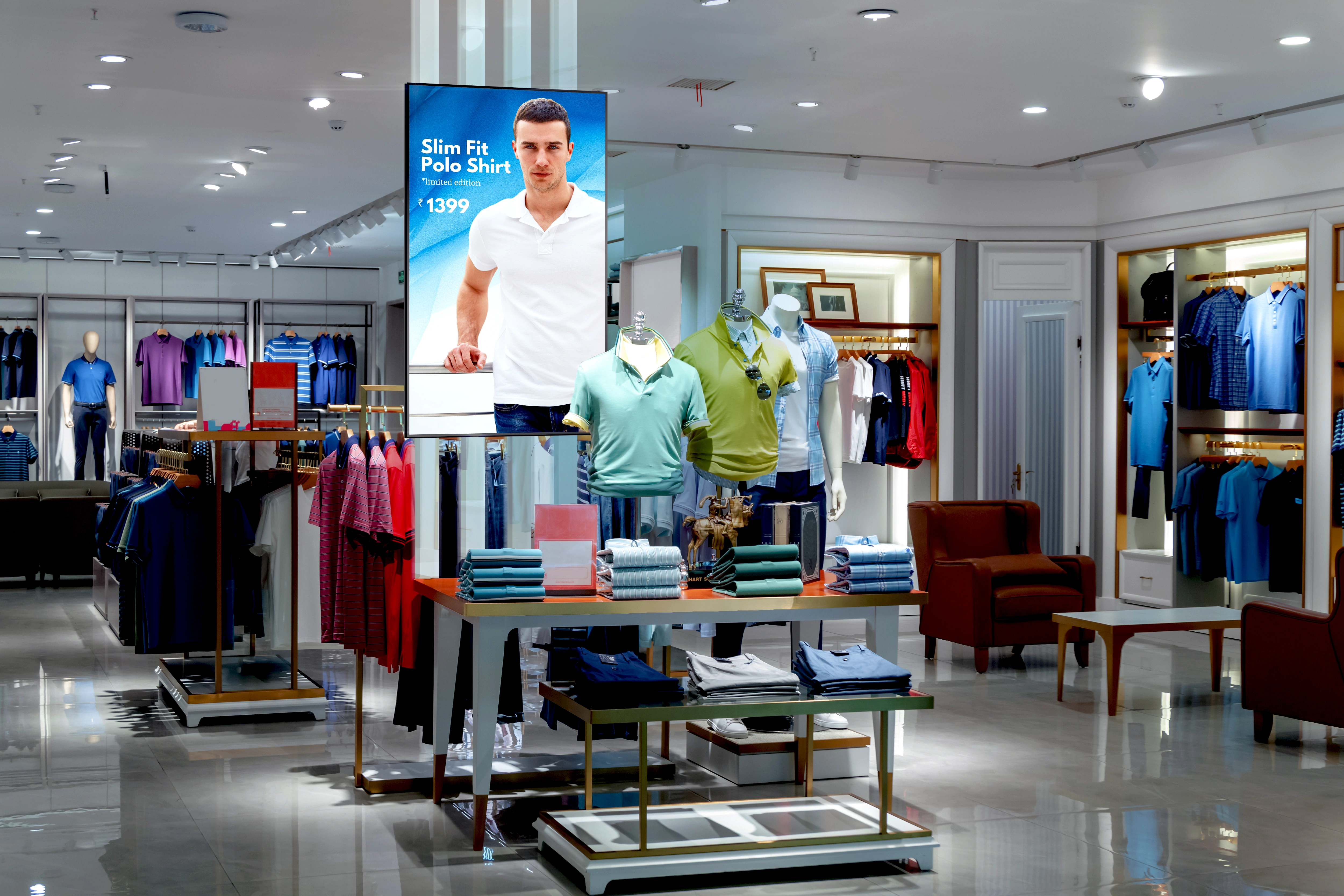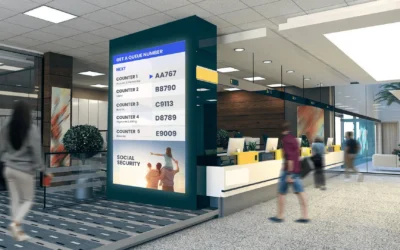From Static to Dynamic: the Benefits of Digital Signage for Visual Merchandising
by Jasdeep Kohli
From Static to Dynamic: the Benefits of Digital Signage for Visual Merchandising
by Jasdeep Kohli

1. Enhanced Engagement and Interaction
One of the primary benefits of digital signage is that it captivates and engages customers in unique ways. Dynamic displays, vibrant visuals, and interactive elements can significantly increase customer attention and dwell time. Digital signage also has benefits for brand recall: in fact, digital signage has an astounding recall rate of 83%, almost double the information retention rate for traditional advertising. For example, an apparel store could use a digital display to showcase a virtual runway, allowing customers to see how garments look in motion. This interactive experience not only elevates the in-store experience, but also encourages customers to interact with the products in new ways and ultimately make a purchase.
Practical Tip: Incorporate interactive features such as touch screens or motion sensors to encourage customers to actively engage with retail digital signage. This could include lift & learn experiences, product customisation apps or gamified content.
2. Real-Time Updates and Flexibility
Digital signage allows retailers to update content in real time, ensuring that their messaging is always fresh and relevant. This flexibility allows for timely promotions, product launches, or flash sales to be instantly communicated to customers. Additionally, retailers can leverage data and analytics to personalise content based on customer demographics, preferences, or even weather conditions. Personalisation has been proven to significantly increase, sales, with research by Epsilon showing that 80% of consumers are more likely to make a purchase when brands offer personalised experiences. By integrating different types of data, retailers can deliver more relevant content and create more personalised shopping experiences for customers.
Practical Tip: Integrate digital signage systems with backend data management tools to streamline content updates and leverage real-time data. This will enable you to deliver personalised and contextually relevant messages to your audience.
3. Easy Analytics and Measurable ROI
Digital signage provides valuable insights through analytics and data tracking. Retailers can monitor customer interactions, measure engagement levels, and track the impact of specific campaigns or promotions. These insights help refine visual merchandising strategies, optimise content, and identify areas for improvement. Additionally, the measurable return on investment (ROI) by tracking sales uplift, customer behaviour, and conversion rates, retailers can assess the effectiveness of their digital signage initiatives and make data-driven decisions. In a survey conducted by Ascend2, 71% of marketers considered the ability to measure ROI as one of the most valuable aspects of digital signage.
Practical Tip: Implement analytics tools and track key performance indicators (KPIs) such as foot traffic, customer engagement, and sales conversions. Continuously monitor and analyse the data to refine your visual merchandising strategies and improve ROI.
4. Improved Brand Experience
Digital signage allows retailers to convey their brand story and values effectively. By integrating visually appealing content, immersive videos, and compelling storytelling, retailers can create a unique brand experience that resonates with customers. For example, an electronics store could use digital signage to demonstrate the innovative features of a new smartphone, showcasing its capabilities in a captivating manner. This not only promotes the product but also reinforces the store’s position as a tech-savvy retailer.
Practical Tip: Align your digital signage content with your brand identity and customer expectations. Ensure that the visuals, messaging, and overall experience are consistent across all touchpoints, both online and offline.
5. Cost-Effective Advertising
Digital signage offers cost-saving benefits compared to traditional print advertising. While static signage requires frequent reprints and replacements, digital displays eliminate these expenses. According to a study conducted by the Digital Signage Federation, digital signage can reduce advertising costs by up to 50%. Additionally, multiple messages or promotions can be displayed sequentially on a single digital screen, eliminating the need for physical space and reducing clutter. This versatility enables retailers to maximise their advertising budget and promote a wider range of products or offers.
Practical Tip: Invest in a high-quality digital signage content management system (CMS) that is scalable and screens that are energy-efficient and offer long-term reliability. This ensures a lower total cost of ownership and maximises the return on your investment.
Retail digital signage has transformed the landscape of visual merchandising, offering retailers a dynamic and engaging platform to connect with their customers. By harnessing the power of interactive technology, retailers can create impactful visual displays that enhance customer engagement, drive sales, and elevate their brand. Embrace the shift from static to dynamic and unlock the full potential of in-store retail digital signage in visual merchandising.
Remember, incorporating digital signage is not just about the technology itself but also the creativity and strategic thinking behind its implementation. When done right, it can be a powerful tool that differentiates your brand and elevates the overall shopping experience.
About the Author:
Jasdeep Kohli,




